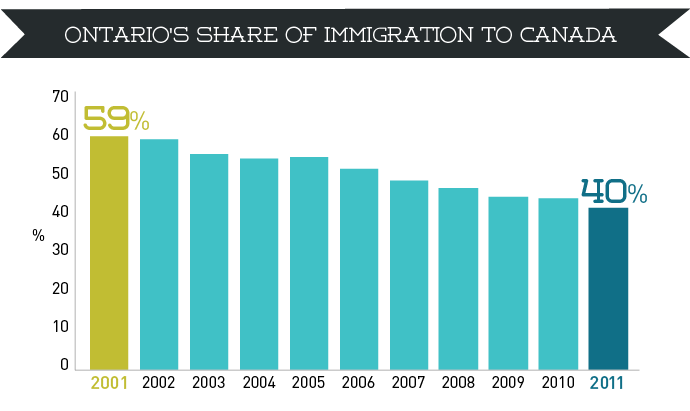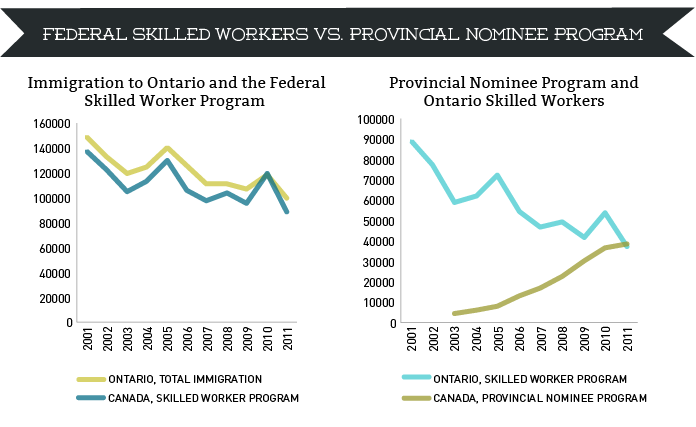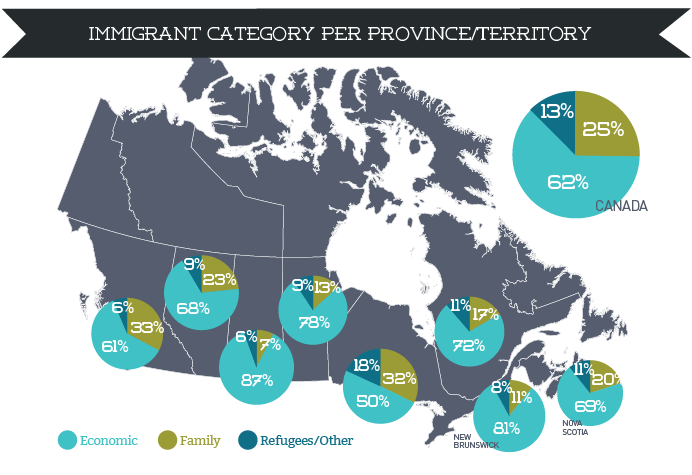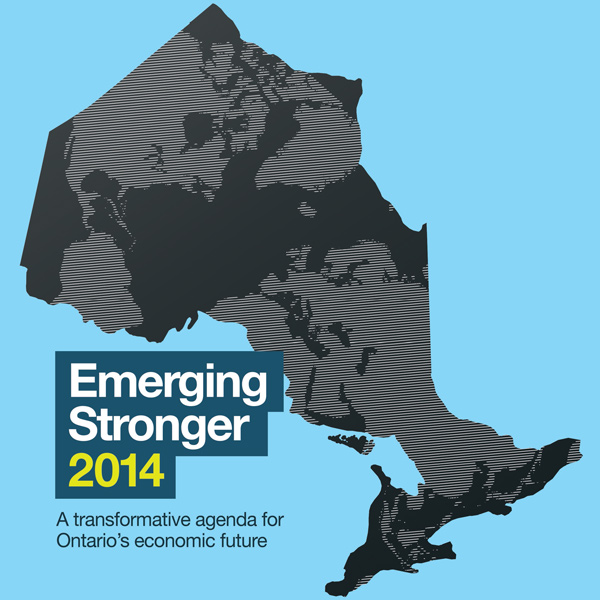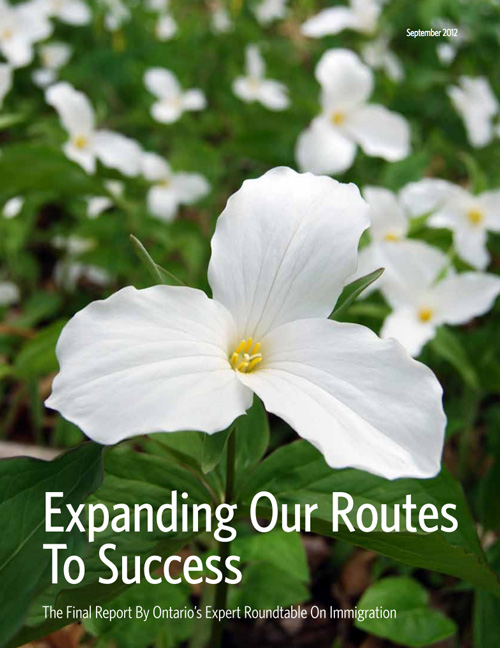August 14, 2014
For most of the last century, Ontario’s population growth was fueled by its status as a magnet for new immigrants. Over the last decade, the province has received a declining share of immigrants to Canada. The Ontario government says it needs more immigrants to bolster Ontario’s labour force and it needs more control over immigration to do that. What are Ontario’s concerns all about?
59 per cent of immigrants to Canada settled in Ontario as recently as 2001. Today it’s closer to 40 per cent.
The total number of immigrants to Ontario dropped by one third between 2001 and 2011. That represents the shift from receiving three out of five newcomers to Canada to two out of five over the same time period.
What’s behind the decline?
Ontario’s immigration levels since 2001 have closely tracked the Federal Skilled Worker program, the points-based system for economic immigrants to apply to come to Canada that has been the main source of immigrants for decades. Ontario has consistently attracted immigrants that come through this program. However, the federal government reduced the number of new immigrants that come through this program by over a third, and also added restrictions so that new applications can only come from about two dozen occupations, many of which are important to the resource sector in Alberta and Saskatchewan.
The decline can largely be explained by a deliberate set of policy changes made by the federal government aimed at getting economic immigrants to settle outside of Toronto, Montreal and Vancouver.
Taking the place of Federal Skilled Workers has been the Provincial Nominee Programs. These agreements with individual provinces allow provincial governments to select immigrants to come to their province. The number of immigrant spots selected through this program has grown exponentially, but only a small fraction (about 5% today) of those spots are allocated by the federal government to Ontario.
In particular, these policies have reduced the number of people that come to Ontario through economic immigration programs. There are three main categories of immigrants to Canada: economic immigrants (who are selected on the basis of their ability to succeed in our economy), family class immigrants (sponsored by relatives to join them here) and humanitarian/refugee immigrants.
The national target set by federal and provincial immigration ministers aims to have about 70 per cent of immigrants to each province come through economic programs and the remaining 30 per cent through the other streams. But as a result of federal changes to immigration policy, the balance in Ontario has tipped further and further away from economic immigrants, leaving the province with a share of economic immigrants well below the Canadian average.
As the province faces the demographic impact of the retiring baby boomer cohort, a continuation of this trend away from economic immigration could be a major risk to the province’s economic growth. Federal changes to immigration policy have resulted in Ontario adding fewer new immigrants to its workforce, and fewer immigrants selected for economic criteria in particular. The result is a significant negative impact on the province’s labour force growth.
How can this change?
This development has the potential to replace the current system with a more responsive one that better supports Ontario. However, the initial plans for the launch of this system in 2015 don’t include the Provincial Nominee Programs and reinforce the restrictive list of eligible occupations. If this pattern continues, the Express Entry system could simply reinforce the distortions that are in place today and further exacerbate the flaws with the current system.
The Express Entry system has the potential to replace the current system with a more responsive one that better supports Ontario.
— Noah Zon
Related research
Emerging Stronger 2014
This paper identifies the challenges still facing the province, and sets out tangible steps that will ensure Ontario emerges stronger from a period of economic transition.
View this paper
Expanding Our Routes To Success
This report represents the advice of the Expert Roundtable on Immigration, which consisted of leaders from the private sector, the settlement services sector, academia, and the not-for-profit sector.
View this paper

